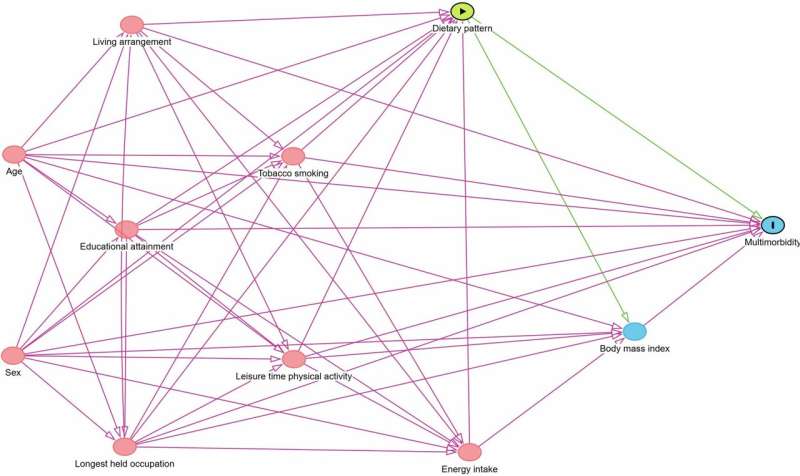Understanding the Dying Process: What Really Happens at the End of Life
Death is an inevitable part of life. But even though dying is a universal human experience, our culture makes it difficult to talk about death openly. As a result, misconceptions and fears can surround what happens at the end of life.
Science is beginning to provide insights into the physical and mental processes involved in dying. Understanding more about this transition can help us approach it with realistic expectations, greater compassion and less fear.
The Dying Timeline: What to Expect
Actively dying is the final phase of the dying process, usually marked by irreversible decline. While each person's end-of-life experience is unique, most follow a similar pattern in the days/hours before death:
1-2 Weeks Before Death
- Increased weakness, fatigue and sleep
- Minimal appetite and reduced thirst
- Difficulty swallowing medications
- Disorientation and confusion
- Less frequent urination
1-2 Days Before Death
- Extreme fatigue, minimal consciousness
- Cooler arms/legs, altered breathing
- Little interest in fluids or food
- Cognitive changes and disorientation
- Loss of ability to close eyes
12-24 Hours Before Death
- Unresponsive to voices or touch
- Irregular, shallow breathing
- Congestion with rattling breathing sounds
- Dramatic changes in blood pressure
- Loss of bladder/bowel control
Understanding the gradual shutting down of body systems helps demystify the process. Alerting family to expect these changes prevents unnecessary emergency calls and allows loved ones to provide comfort.
The Physiological Processes of Dying
Several biological processes take place as the body begins to shut down in preparation for death:
Decreased Nutrient Intake
As appetite diminishes, the body receives less nutrition. Combined with metabolic changes, this leads to weight loss and muscle wasting.
Circulation Changes
Blood circulation slows, causing the extremities to cool and skin to mottle or take on a waxen appearance. Blood pressure can fluctuate dramatically.
Changes in Breathing Patterns
Breathing becomes irregular and may speed up or slow down. Congestion causes liquid breathing sounds. The decrease in circulation lowers oxygen levels.
Decreased Kidney Function
Reduced blood flow to the kidneys causes a build-up of waste products and decreased urine output. Loss of kidney function contributes to toxin build-up.
Loss of Brain Function
Due to oxygen depletion and toxin build-up, brain cells begin to die. This leads to loss of consciousness, followed by coma and complete brain death.
These changes signify the systematic shutdown of body systems. Understanding them helps families know what to expect.
Is Pain Part of the Dying Process?
Pain is one of the most feared symptoms at end of life. However, studies show dying patients generally experience less pain as death approaches. Reasons include:
- Disease processes stabilizing
- Decreased sensory perception
- Endorphins released by body
- Lowered consciousness near death
Pain medications should be provided as needed. But the dying process itself involves less pain owing to natural pain-relieving effects.
What are Terminal Restlessness and Terminal Secretion?
Two common end-of-life phenomena are:
Terminal Restlessness
Agitated delirium with patients picking or hallucinations. Believed caused by toxin build-up in the body. Usually managed with medication.
Death Rattle
Gurgling or rattling breathing sounds. Caused by saliva and mucus buildup as the muscles relax near death. Not necessarily distressing to patient.
Educating families about these prevents unnecessary anxiety. They signify normal dying physiology rather than suffering.
Role of Palliative Care for Symptom Management
Palliative care, including hospice, plays a key role during dying. The focus is on:
- Controlling pain and discomfort
- Relieving symptoms of confusion, anxiety or restlessness
- Maintaining dignity and quality of life
- Providing social and spiritual support
Palliative care neither hastens nor postpones death, but aims to make patients as comfortable as possible.
What is Actively Dying?
"Actively dying" refers to the final 1-4 days before death when bodies exhibit the following:
- Profound weakness/unconsciousness
- Minimal to no intake of food/fluids
- Difficulty swallowing medications
- Extremely irregular breathing
- Loss of bowel/bladder control
- Mottling of skin and cooling of extremities
Recognizing these signs helps family prepare emotionally and focus on comfort care.
Do Hearing and Touch Remain at End of Life?
When patients are nonresponsive, families may wonder if they can still hear or feel touch. In fact, hearing is believed to be the last sense lost before death. Other insights:
- Hearing remains until the end, so speak reassuringly
- Gentle touch helps convey presence and comfort
- Stimulating senses can trigger seizures, so keep input calm
- Even unconscious patients may sense they are not alone
Continuing sensory input and human connection, even one-sided, benefits the dying.
Peaceful Transition: Emotional and Spiritual Insights
In addition to physical changes, dying involves emotional and spiritual dimensions. Understanding these helps bring more depth and meaning to this transition.
Common Emotions and Ways to Cope
As patients near death, they may experience emotions like:
- Fear: Reassurance from loved ones is helpful. Holding hands and playing soothing music can also ease fear.
- Anger: Don't take it personally. Respond with empathy and avoid escalating tensions.
- Remorse: Offer forgiveness and loving connection. Life reviews help resolve regrets.
- Sadness: Allow them to express feelings. Offer comfort through your presence.
Acknowledging difficult emotions with compassion helps patients find peace.
Finding Meaning and Life Review
As death approaches, there is increased meaning-seeking. Life review helps resolve regrets and find meaning. Ways to facilitate include:
- Sharing memories of significant events
- Expressing love, gratitude, forgiveness
- Compiling personal/family history
- Listening to meaningful music
This life review process contributes to acceptance and lets patients know they made a difference.
Spiritual Needs and Rites
Addressing spiritual needs is also important, such as through:
- Prayers, rites or rituals
- Visits from spiritual leaders/community
- Discussion of beliefs and values
- Reading religious scriptures or texts
Honoring religious/cultural traditions offers comfort and meaning to the dying.
Signs Death is Near
Subtle signs indicate death is approaching, including:
- Seeing loved ones not physically present
- Making peace through symbolic dreams/visions
- Withdrawing from the physical world
- Loss of interest in food or drink
Paying attention to these cues allows family to say goodbye.
Supporting Your Loved One with Compassion
The dying process is profound journey filled with meaning. Here are some principles for providing compassionate support:
- Be present: Bear witness without judgement. Simply listening is powerful.
- Affirm their worth: Reassure the dying person of their value and the lives they touched.
- Respect dignity: Attend carefully to physical needs and maintaining privacy.
- Offer comfort: Use gentle touch, favorite music, poetry, or spiritual readings.
- Share gratitude: Express what their life brought you even if hearing is diminished.
Through understanding the dying process, and offering connection and comfort, we can help our loved ones complete lifes journey with grace.
Disclaimer: This article is for informational purposes only and does not constitute medical advice. Always consult with a healthcare professional before starting any new treatment regimen.
Related Coverage
Navigate Medicare in Idaho with confidence. Compare plans, avoid mistakes, and choose smart coverage that fits your health and budget....
Lose weight without sacrificing flavor. Discover 50 delicious weight loss foods like fruits, vegetables, whole grains, lean proteins, healthy fats and spices....
A healthy diet for seniors boosts energy, supports brain health, and prevents disease. Easy changes make a big difference as you age....
Don't face unexpected costs. Know how the Medicare Part A penalty works and how to avoid paying more for your coverage....
Get free rides and Medicare transportation benefits for seniors. Learn how to access covered services and stay independent....
Learn how to choose the best glycemic index (gi) brands of bread, cereal, pasta and more for managing blood sugar if you have diabetes or prediabetes....
Learn the importance of cleansing and exfoliating skin. Get tips for choosing the right facial cleansers and exfoliators for your skin type and how to properly exfoliate your face and body....
Learn the importance of cleansing and exfoliating skin. Get tips for choosing the right facial cleansers and exfoliators for your skin type and how to properly exfoliate your face and body....
Cats can provide companionship, mental stimulation, and comfort for seniors with dementia. Learn how cats benefit dementia patients and tips for integrating a feline companion....
Medicare life insurance doesn't exist—learn the truth about Medicare and real life insurance options for seniors and their families....








